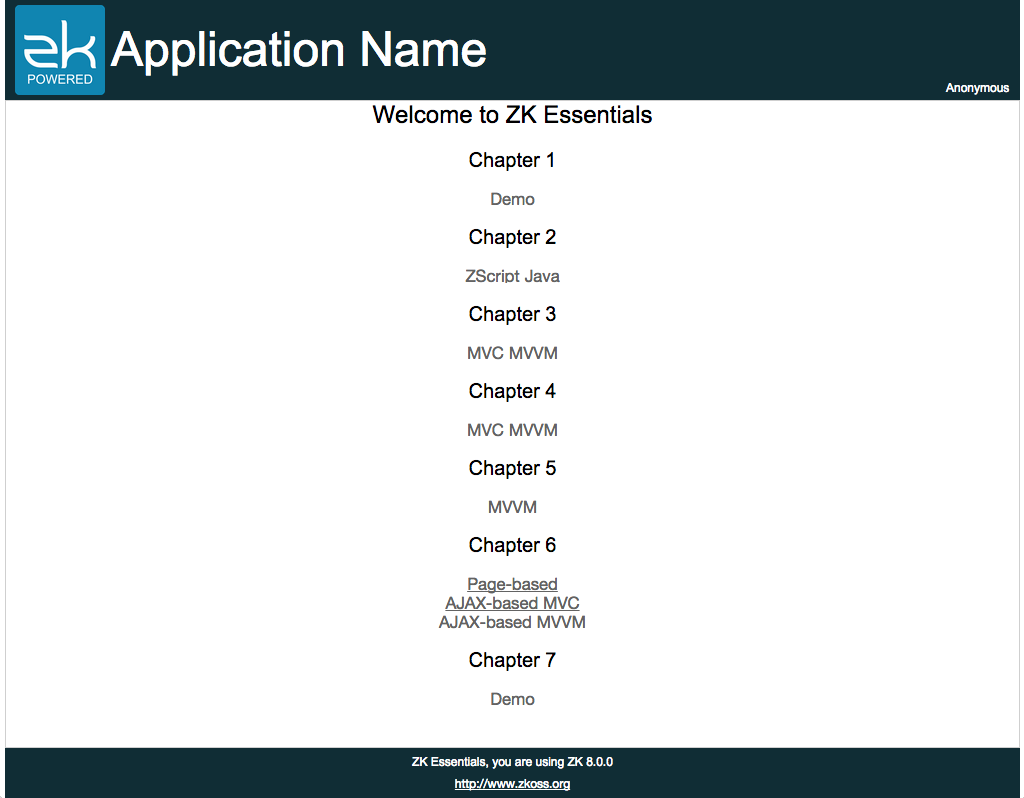Source Code
All source codes used in this book are available on github. As our example application has 3 different configurations, our source code is divided into 3 branches:
- master: contains examples from chapter 1 to chapter 7.
- zk-spring: has examples integrated with Spring
- zk-jpa: contains examples which integrate with Spring and persiste data into a database with JPA.

You can click the "ZIP" icon to download the current selected branch as a zip file.
Run Example Application
After you download the source code, you will find it is a Apache Maven project with jetty plugin configured. Therefore, you can start the example application on Jetty without deploying.
No Maven Installed
Even you don't install Maven, you can start the project with maven wrapper by the command below (it will automatically download required maven):
Linux/Mac
./mvnw jetty:run
Windows
mvnw jetty:run
With Maven
Navigate to the root folder of the example project, e.g. it's "zkessentials" and type the command:
mvn jetty:run
With Gradle
You have 2 options:
- Start with the gradle plugin gretty
gradle appRun
- Start with embedded jetty-runner that we configured in build.gradle
gradle startJettyRunner
After starting up, visit the URL http://localhost:8080/zkessentials/, and you should see the page below:

Project Structure
The example project's folder structure follows Maven's default convention. We name Java packages according to each chapter, and each package contains the classes of that chapter. Some common classes are separated to an independent package as they are used in multiple chapters, e.g. the classes under org.zkoss.essentials.entity.* are entity class. We also define some service layer interfaces under org.zkoss.essentials.service.* because different chapters have different implementations.
For ZUL pages, we put them in separate folders for each chapter
under src/main/webapp/. Under "WEB-INF" folder, web.xml contains
minimal configuration to run ZK and for its detail please refer to ZK
Installation Guide \ Create and Run Your First ZK Application
Manually.
The "zk.xml" is optional configuration descriptor of ZK. Provide this
file if you need to configure ZK differently from the default behavior.
Refer to ZK Configuration Reference/zk.xml for more detail.